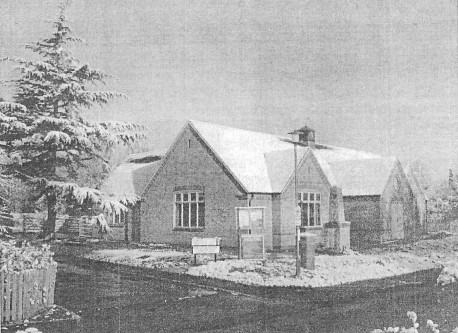The following details are from the Village Hall website – https://www.churchlawfordvillagehall.co.uk/about-us/
Church Lawford Reading Room was built in 1912 on land given for the purpose by the Duke of Buccleuch. It was managed by Trustees. A second plot of land adjacent to the first was given to the Trustees in 1926. Although called a Reading Room the building was used mainly for meetings of village organisations and for social functions. Though generally well maintained, by 2007 when finally demolished the building had developing structural problems, was quite small and its facilities were old fashioned, which limited its use as a community facility.
Prior to 1996 there was a school in the village. From 1964 to 1996 this was on land adjacent to the Reading Room. The school had a large hall and facilities that were generally better than those of the Reading Room. Accordingly it was extensively used for village functions outside school hours. Behind the school was a sports field that doubled as a recreation ground for the village. In July 1996 Warwickshire County Council closed Church Lawford School. The community had fought hard against the closure and were anxious that the loss of the school should not also mean the loss of the community facilities that the school hall and sports field had represented. A Steering Group was set up prior to the closure to explore the options.
After extensive consultation the Steering Group produced proposals, which were unanimously approved at a village meeting on 22nd May 1996. The proposals were that village representatives should negotiate with Warwickshire County Council and Coventry Diocesan Trustees who controlled the school site, to obtain for the village the recreation ground and that part of the school grounds that lay immediately behind the Reading Room. This would allow the extension of the Reading Room and its modernisation into a proper Village Hall to replace the facilities lost with the school hall.
Negotiations were long and complex involving the County Council, the Diocesan Trustees, the Charity Commission, the Duke of Buccleuch, Church Lawford Parish Council, and the Reading Room Trustees.
The new facility was officially opened with many notable features on 16th July 2008.
The design of the new Hall is deliberately reminiscent of the Reading Room that formerly stood on the same site to blend into the village landscape. The new Hall boasts an extremely low carbon footprint. High standards of energy conservation and innovative features such as under floor heating by ground-sourced heat pump, sun tubes to maximise natural light, rainwater harvesting and low energy electrics also feature in the design. These ensure that the new Hall, although double the size of the former Reading Room and with much better facilities, uses less power and is much more environmentally friendly than the old Victorian building.
The green credentials are further enhanced by re-using on the new building hand-made roof tiles salvaged by villagers from the Reading Room. Villagers also saved and cleaned hundreds of hand-made bricks from the Reading Room for sale and re-use, proceeds going towards the cost of the new Hall.
The Village Hall was built by local contractor Bilton Design and Build. It cost around £400,000 this was funded thanks to grants from a number of organisations. The Rugby Cement Benevolent Fund, Rugby Borough Council, and the Garfield Weston Foundation contributed generously as did the Church Lawford School Houses Charity and the Sir Edward Boughton Long Lawford Charity. Substantial awards under the Landfill Communities Fund have been made by Biffaward, Veolia Environmental Trust, Waste Recycling Group (administered by Environmental Body WREN) and Lafarge Aggregates (administered by the Warwickshire Environmental Trust).
Despite the generosity of the funders the Village Hall Committee were still a few thousands short of the total needed to fund all the works, by the time the final costs were known, so items such as internal decoration and landscaping the grounds were completed by groups of volunteers.

This page, and similar more contemporary pages from the late 20th century into the 21st will be expanded and augmented with collaboration from those who were part of these events, or who witnessed them.
